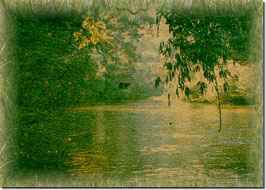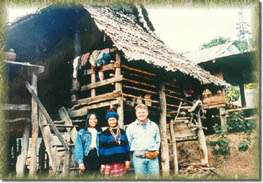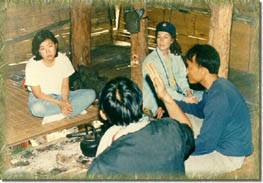



VILLAGES
Doi Inthanon contains no less than 31
hilltribe villages, which contain about 5,000 people. Two
villages are Hmong, and the rest are Karen.
The Hmong raise flowers and vegetables
for sale, and are largely incorporated into the cash economy.
The Karen are primarily rice farmers,
practicing both hill and paddy rice culture, and live a subsistence-based
lifestyle.
Both cultures hunt to supplement
their diets: animals make up the majority of their protein source.


Khun Klang Village, at Km. 31
near the Park Headquarters, is a Hmong village of over 1,000 people. It
was established about 30 years ago, circa 1962. There is a silver craft
near the entrance to the Royal Project where you can watch people make
traditional silver jewelry. There are also vendors selling elaborately
embroidered clothing and items, and a few noodle stands.

Pamon, at the end of a dirt road
which starts at Km. 23, is one of the oldest villages in the park. It was
established circa 1850. It is not 'tourist oriented' and offers little
in the way of tourist services. There are, however, a few noodle stands
that offer food and drink. During the dry season, a 4-wheel drive vehicle
can drive a back road leading from Pamon Village to Khun Klang Village.
This road offers views into a traditional,
working Karen village, and the scenery is really quite beautiful.

Sop Had Village, across from
the Fire Station at Km. 21, is a very short walk from the road. It is a
tiny, traditional, pleasant village. Because of its proximity to the road,
the people there are somewhat used to visitors, and a few houses have traditional
clothing and other woven goods for sale.

chiangmai - tour - trek - trekking - doi inthanon - birdwatching - chiang mai
|
Chiangmai
Nature Tour, Ltd Part.
TAT License No24/0391
9 Soi 4 Wiengbua Road, Chang
Puak Chiangmai 50300
Tel/Fax: [053] 210917
cmct@chiangmai-online.com

|